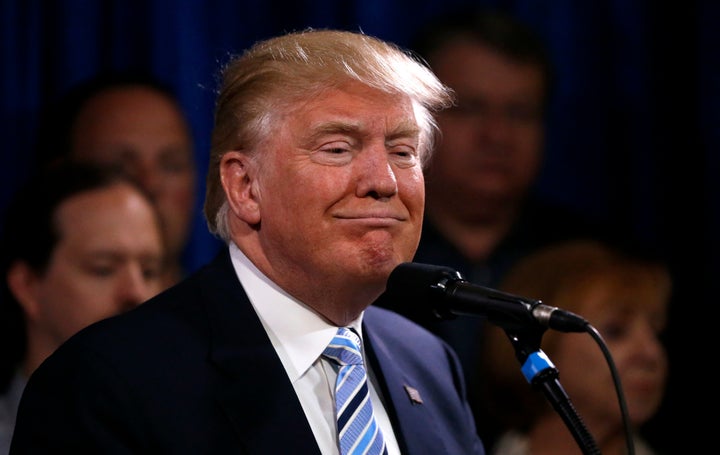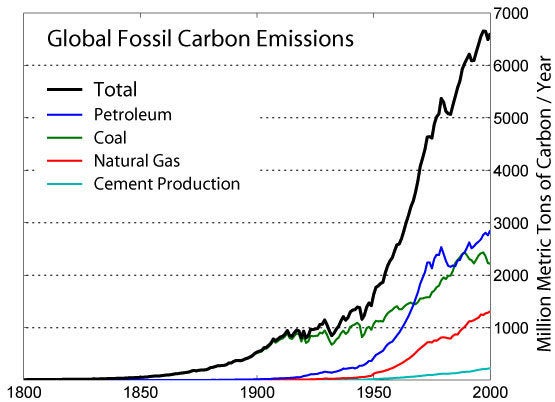
Under Donald Trump’s presidency, oil and gas pipelines ― including the controversial Keystone XL and Dakota Access conduits ― will crisscross the United States. Environmental protections will be scrapped, not one by one, but in a complete regulatory overhaul. The country will re-evaluate, if not toss out, the historic climate accord reached in Paris last year. Fewer government watchdogs will police pollution.
At least that’s how the American Petroleum Institute sees the next four years.
During a call with reporters on Thursday, Jack Gerard, chief executive of the oil and gas industry’s largest trade group, laid out a vision to reverse much of the environmental progress made over the last eight years. After all, Republicans, who will gain control over most of the federal government next year, are the only major party in the developed world to reject scientific evidence of climate change.
“The implication of having a Republican Senate, a Republican House and a Republican presidency is driven more by the American people’s clear direction: We want to be focused on job creation,” Gerard said, touting what he called a coming “American energy renaissance.” “It’s also a recognition that some of the unnecessary burdens of regulation are not what we are supposed to be doing.”
Gerard declined to name his preferred picks to lead the Environmental Protection Agency, the Department of Energy or the Department of the Interior, which upholds federal trust responsibilities to Native Americans and oversees public lands and national parks.

But Gerard’s likely pleased with the options Trump has floated so far. Already, the campaign has tapped Mryon Ebell, a climate skeptic, to lead the EPA working group on Trump’s transition team. Trump’s longtime friend Harold Hamm, the billionaire chief executive of the oil company Continental Resources, is a leading contender for energy secretary. Another oil executive, Forrest Lucas, the 74-year-old co-founder of the oil products company Lucas Oil, is on the short list for interior secretary. Former Alaska Gov. Sarah Palin, who coined the slogan “drill, baby, drill” during her failed 2008 vice presidential bid, is also on that list.
Trump’s proposed $1 trillion plan to rebuild infrastructure should include support for the rejected Keystone XL pipeline and the hotly contested Dakota Access Pipeline, Gerard said. Last year, President Barack Obama put the kibosh on Keystone XL, the proposed 1,179-mile oil conduit from Alberta to Nebraska, but TransCanada, the company behind it, said Wednesday it planned to re-pitch the idea to the incoming administration. The Dakota Access Pipeline, which Native American tribes and environmentalists have been battling for months, seemed likely to move ahead anyway, despite Obama’s tepid calls to halt construction. A Trump presidency may seal its victory.
“To quote James Hansen,” said Michael. E. Mann, professor of atmospheric science at Pennsylvania State University, citing the famed climate scientist, “I fear this may be game over for the climate.”
Gerard declined to point out which environmental restrictions he deemed most burdensome, and instead proposed a complete overhaul of the regulatory system.
“We need to look at the current regulatory approach holistically,” he said. “When you look at it holistically, you can raise which ones need to be addressed to allow the energy system, to allow infrastructure, to move forward.”

The historic climate accord reached in Paris last December ― the first international agreement to reduce carbon emissions that included the world’s biggest polluters, the U.S. and China ― could be tossed out, Gerard suggested.
“I don’t want to speak for this administration,” he said. “There is a lot of discretion, obviously, in the power of the executive in how it relates to the Paris agreement.”
The treaty, which went into effect last Friday, calls for massive cuts to carbon emissions and sweeping investments in clean, renewable energy sources such as solar and wind. Instead, Gerard said the incoming administration should bolster natural gas production, which typically occurs through the controversial extraction technique known as fracking.
Natural gas overtook coal as the country’s leading source of electricity this year. Though the gas emits fewer carbon particles, natural gas wells leak methane, a potent greenhouse gas that can trap 84 times as much heat as the equivalent amount of carbon dioxide in the first 20 years it’s in the atmosphere, according to the nonprofit Environmental Defense Fund.
Earlier this year, a natural gas blowout near Los Angeles caused the biggest methane leak in U.S. history. Still, Gerard said the industry can largely police itself.
“We’ve demonstrated that we’re capturing methane more and more over time, and the challenge there is relatively small,” he said. “We’re highly motivated to capture all methane, that’s our business that we do, and sell the product.”

